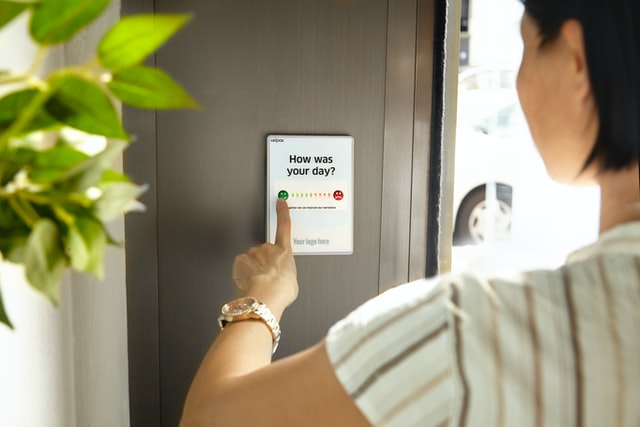Remote work has been around for many years but since early 2020, it has grown in popularity. Employees in companies from myriad industries were mandated to work from home, and software developers were no exception. Although many people enjoy a traditional office setting and appreciate the environment that comes with it, others prefer their home office. With the rise in people working from home, on what was perhaps seen as a temporary solution to a global pandemic, the format was embraced by many. In response, companies have created permanent remote and hybrid positions.
Accommodating Demand
The creation of fully-remote positions had the effect of attracting talent that was previously restricted by geography. Simply put, qualified resources lived too far away from the office and were unable or unwilling to relocate. This is reflected by the results of our 2022 Tech Hiring survey, which shows that 40% of recruiters are now hiring internationally. This is somewhat different from a hybrid position, where employees spend some days at home and some days at the office, but both of these work styles are new to many companies and relevant to our discussion.
Remote Work is Here to Stay
When compiling our survey, we discovered that 70% of developers want to adopt either a hybrid or fully-remote work format, compared to a mere 4% that would prefer to work full-time in an office setting. With this level of demand, it is clear that attracting and retaining good employees will require at least hybrid work options. Likewise, companies that offer more remote options are more attractive to good talent. One out of three recruiters that contributed to our survey offers fully remote positions, whereas 29% offer the flexibility of a hybrid position. With statistics like this, it is clear that remote work is here to stay.
Challenges
Regardless of why people choose to work from home or how much facetime they put in at the office, software engineering managers and team leaders need to adjust accordingly. Managing a remote team is different than managing an in-person team and one of the key challenges is keeping remote workers engaged. One consideration is that remote employees need to be recognized for their contributions and worth, including in situations where teams are made up of fully-remote, hybrid, and full-time office employees.
It is important to consider what our survey results show, which is that 32% of developers and 51% of recruiters think that having a mix of on-site and remote workers positively impacts productivity. However, just as important is that remote workers sometimes feel alienated. In a 2021 study by the Society for Human Resource Management (SHRM), they found that 42% of supervisors sometimes forget about remote workers when it comes time to assign tasks. As such, the concern of neglect is not unjustified. This is why employee engagement is so important.
Employee Engagement
Keeping employees engaged is nothing new, and it is something that is driven by effective management. The reality is that companies have always worked towards improving employee engagement, but understanding what makes remote workers different, as well as how they are the same, is an important step in the practice to keep them engaged. For example, when considering an employee’s needs, a safe and comfortable work environment is something that is well understood in a traditional office. On the other hand, special perks for improving a home office would be unique to remote employees. These two satisfy the same needs but are each tailored to their working environment.
To keep employees engaged, companies need to create a plan that includes regular and sustainable engagement policies and activities. Drivers that are common to all employees, such as being fairly compensated with salary and benefits, obviously still have a place. However, with keen attention to remote employees, we offer several suggestions.
Regular Communication
Employee communication is critical for a company’s health, regardless of how large or small the organization is. Without regular communication, you lack collaboration, the ability to manage, and the ability to track goals and monitor deadlines. To a certain extent, accountability is also lost because without solid communication, tracing problems can be difficult. Managers that take the time to invest in clear lines of communication build trust in their subordinates. When an employee cannot voice their concerns or feel that their opinions don’t matter, they become frustrated and the culture suffers.

Virtual Meetings
Maintaining regular communication with remote workers helps them feel like they are part of the team. If a person feels like they do not belong then it is demotivating, they become disengaged, and productivity decreases. If, for instance, somebody is working in another timezone and their working-hours overlap with the main group is minimal, then feelings of isolation may serve as a distraction. One way to curb this effect is to involve people in meetings using video conferencing software such as Zoom, Google Meet, and Microsoft Teams.
Meetings of various sizes can be used to encourage interaction and facilitate collaboration, even between people in different time zones. On the topic of meetings, it is important to consider that people need to feel like they are involved. Participation in remote meetings should be encouraged, as you don’t want the audience to feel like they are simply watching a webinar. Managers should not be the only ones that are doing the talking.
Quiet Time
It is also important to remember that while people need regular communication, they also need their alone time. Regular communication is not the same thing as constant communication. Having meetings too often will lead to diminishing returns because the interruptions detract from productivity. Nobody can effectively deal with a constant bombardment of chat requests or messages, yet remain alert to issues concerning the project or team. Essentially, with too much noise, it is difficult to focus on important details and updates.

Don’t Create and Assign Impractical Tasks
Good communication goes a long way toward building a successful project; however, practicality needs to be considered when delegating tasks. For example, two people that are located in drastically different time zones should not be assigned to work on the same feature. If a task requires that they communicate frequently, then it does not make sense to choose people with incompatible schedules. Rather, an effective manager will choose team members that can most easily collaborate. Although this is a multifaceted consideration, an obvious aspect is workday overlap. The number of overlapping hours between collaborators should be maximized, and not configured such that certain people are required to constantly work outside of their business hours.
Avoid Alienating Remote Employees
Aside from the communication aspect, there are plenty of reasons that fully-remote employees feel like they are not part of the company culture. The reality is that a team is still a team, whether they work in the same office space or they are on different continents. Having the proper people-centric policies in place promotes fairness and equality.
For example, always hosting meetings at the same time is a poor way to deal with a remote team that is spread across different time zones. If during one meeting, a member has to work outside of their typical hours, then they might be specifically accommodated during a subsequent meeting. Alternatively, times that make everybody feel accommodated may be available, depending on how widespread the group is. Proper planning is the responsibility of well-informed and effective leadership.
When companies host events, they need to consider remote-friendly options to be inclusive. For example, team-building exercises are traditionally the domain of in-person excursions. Larger organizations may be able to accommodate remote employees by assisting with travel expenses, but this is not always practical. As such, managers must turn their attention to virtual equivalents that still accomplish the same goals.
Knowing that team-building activities are intended to promote bonding, motivate people to work together, help build on their strengths and compensate for their weaknesses, a virtual program can be developed to meet the same ends. One such program is Coding Escape, which is our self-service platform intended to strengthen collaboration and boost engagement.
Implement Effective Collaboration Tools
Having a good set of tools to help team members collaborate efficiently is a must for engaging remote workers. Engagement is about more than checking up on people; they have to be able to work together. This is true at every stage of a project, from brainstorming to deployment. Without the proper tools, employees may feel that they can’t adequately contribute to the team effort. Following are examples of some tools that we find helpful.
Figma is an example of a collaborative design tool that can be used for effective brainstorming and interface mockup. Notion is a flexible and easy-to-use project management and note-taking tool that can be used as a single source of truth for all of your projects. The Microsoft 365 suite of apps are cloud-based and optimized for collaboration, helping team members work together no matter where they are in the world. Regardless of which tools are optimal for your environment, it is critical to invest in the ability for remote employees to feel like they are part of the team.
Encourage Social Interaction
Being part of a good development team is about more than sharing lines of code. A remote workforce also has happy hours, and they play well together. Encouraging social interaction between employees is the responsibility of a good leader because employees that feel comfortable communicating with each other foster collaboration, cooperation, and innovation.
Virtual Water Cooler
One way to help spark conversation between workers is to promote the virtual water cooler. The idea is to initiate chatter between employees that would otherwise not have a place within the confines of their respective projects. The in-person equivalent might be a hallway chat, an impromptu lunch, or a quick ride in the elevator. This type of communication is good for both employees and employers, and some thought has to go into making it part of the routine because virtual employees will not meet by happenstance.

Similarly, employees won’t “schedule a video meeting” so that they can chat about non-work issues, such as esports or a Netflix series they enjoy. To encourage such interaction, management needs to schedule and promote remote social time. An informal social network is an important component of community and company culture, and in-person communications are part of many workplace routines. Decent substitutes need to be encouraged for remote employees and we suggest a couple of places to start.
Implementing a virtual water cooler can be as simple as setting up a video conference that is always running, where people can join and leave at any point. Upon entering, people can split off into personal breakout rooms or otherwise carry on a discussion with whoever is present. Alternatively, an online card game, virtual pool table, or a virtual walking tour are good ways to get people to relax during their breaks. Tools such as donut can also help with this.
Company Policies and Practices
Company meetings can be scheduled such that they have a lead-in and lead-out time for employees to chat privately or in small groups (for example, in breakout rooms). As in the case of physical meetings, it is often the only time that people from different parts of the company have the opportunity to meet and chat. Keep in mind that these types of discussions need to be easy to have, so appropriate policies need to be put in place and the proper time allotted. Keeping with the example of a longer lead-in and lead-out time for meetings, it will be of little use if people don’t show up until the actual meeting starts, or leave as soon as it’s over. Also, pre-meeting and post-meeting discussions should not be an extension of the meeting but rather, revolve around other topics. These are the types of issues that need to be addressed using appropriate strategies and policies.
Other approaches to promote employee interaction are regularly hosting a digital breakfast or lunch, scheduling team-building activities, and creating social breaks such as lunch-time leisure. For tech squads, scheduling team-building exercises like Coding Escape is a great way to get people talking.
Promote and Facilitate a Healthy Work-Home Balance
An oft-neglected aspect of keeping employees engaged is to ensure that the time they spend away from work is indeed time that they spend not working! Although it is important to offer a variety of hybrid work options, people must maintain a good work-life balance. Otherwise, productivity will suffer.
Unplugging from work during certain hours should be encouraged, yet there may be a benefit to leaving people access to the company’s resources to facilitate off-hours social time. This is something that will depend on company culture and how comfortable employees are with each other.
Measuring Engagement
As with anything, one cannot strive to improve employee engagement unless they first have a way to measure it. A lack of engagement can lead to unhappiness, loneliness, and feelings of underappreciation. However, a manager will be unable to tell whether something is improving or getting worse unless it can be effectively gauged. This requires metrics.
Surveys
A helpful measure can be found by utilizing employee and management surveys. Well-constructed surveys will measure engagement and sentiment across teams, projects, and roles. The process will also yield valuable insights that will help to focus human resource efforts effectively.

Employee Net Promoter Score
An effective metric for our purposes is the employee net promoter score (eNPS), which helps to get a feel for employee sentiment and loyalty. Furthermore, it can be used to predict how employees talk about the company. For example, a high eNPS suggests that employees tout the company as a good place to work. Determining the eNPS is a simple process that starts with the following question:
“On a scale of 1 to 10, how likely is it that you would recommend our organization to a friend or colleague?”
Once you collect and tally the results, it is easy to calculate your eNPS. This may seem like an oversimplified survey and indeed, you won’t learn everything that there is to know from your eNPS, but it’s a good place to start.
Conclusion
To summarize, remote work is here to stay and companies that adapt well to it will reap the greatest benefit. While there are advantages to having remote employees, there are inherent challenges to keeping employees engaged. Following some of these suggestions may help to keep employees focused, loyal, and productive.

